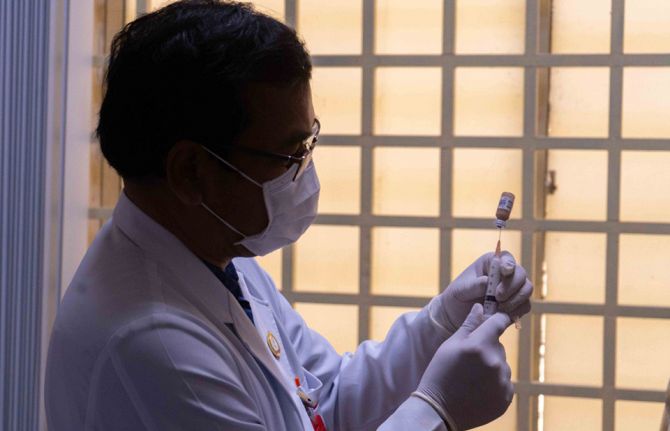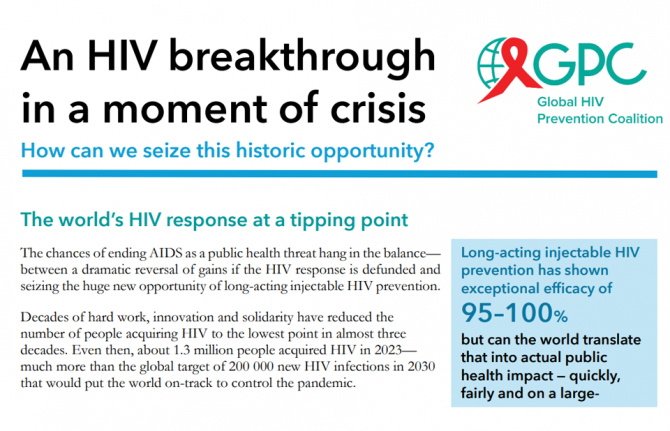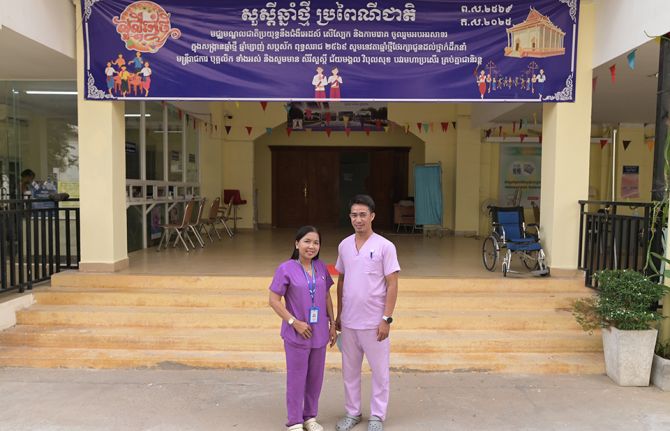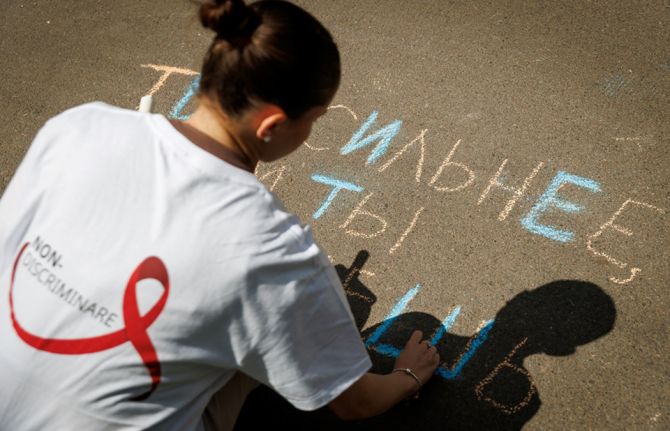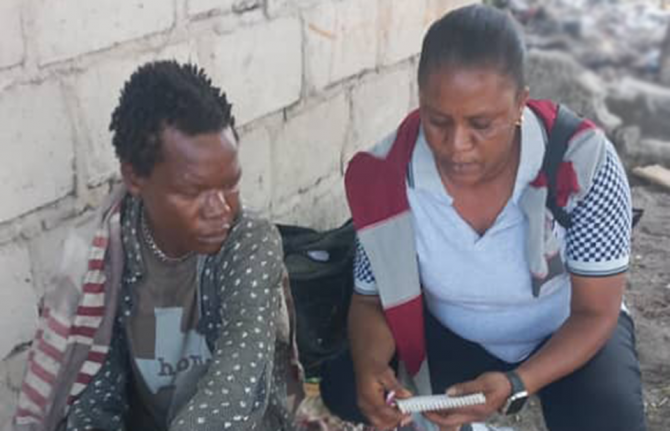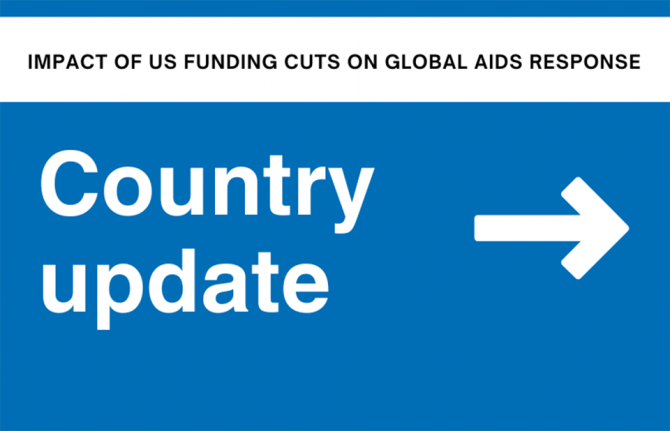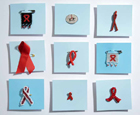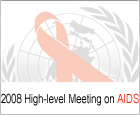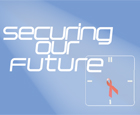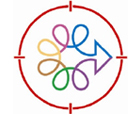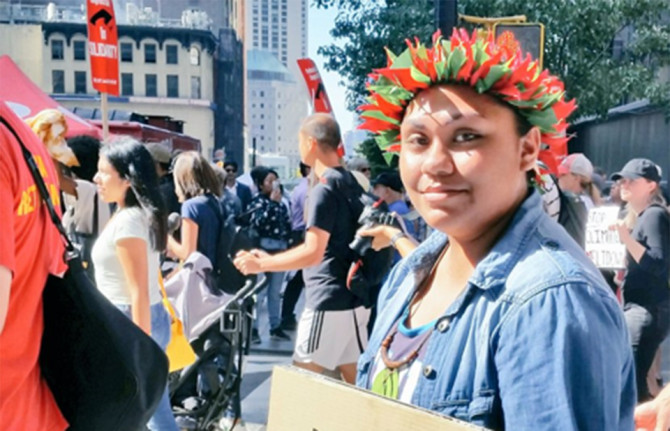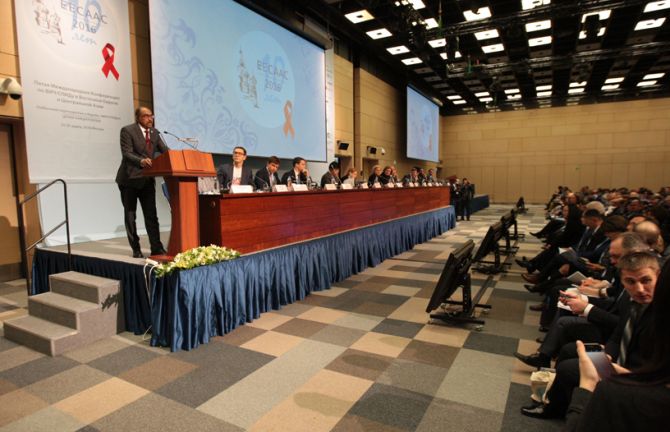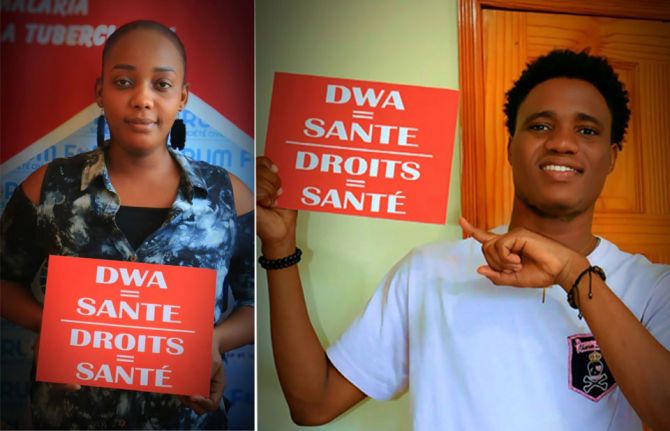
Feature Story
New head of UNAIDS Michel Sidibé sworn in by UN Secretary-General
23 January 2009
23 January 2009 23 January 2009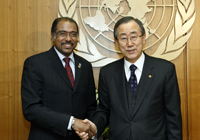
(from left) UNAIDS Executive Director Michel Sidibé and UN Secretary-General Ban Ki-moon, 22 January 2009.
Credit: UN
Michel Sidibé was sworn in as new Executive Director of the Joint United Nations Programme on HIV/AIDS (UNAIDS) by Secretary-General Ban Ki-moon at UN Headquarters in New York yesterday. Mr Sidibé took up his post as head of UNAIDS and Under Secretary-General of the United Nations on 1 January.
After taking the oath of office, Mr Sidibé had the opportunity to share his vision for a re-energized global AIDS response with Mr Ban. Accelerating the work on universal access to HIV treatment, prevention, care and support is Mr Sidibé’s top priority for UNAIDS.
I have no doubt your decades of experience with UNICEF and UNAIDS, including in the field, will be an asset to the fight against HIV
UN Secretary-General Ban Ki-moon
Secretary-General Ban Ki-moon stressed his readiness to support Mr. Sidibé, saying: "I want to assure you of my full support in your new role as Executive Director of UNAIDS. I have no doubt your decades of experience with UNICEF and UNAIDS, including in the field, will be an asset to the fight against HIV."
"I am deeply committed to the fight against HIV on a personal level. I have—and will continue—to speak publicly about the importance of making universal access to preventive treatment, care and support a reality by 2010," said Mr Ban.
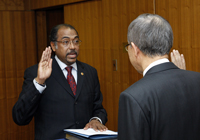
Mr Sidibé took the oath of office from Secretary-General Ban Ki-moon, 22 January 2009. Credit: UN
The Secretary-General also encouraged Mr. Sidibé "to seek bold measures" to ensure that people, irrespective of their life choices, get access to services. "We must therefore continue efforts to eliminate stigma and discrimination against people living with HIV and uphold their rights—including their right to travel."
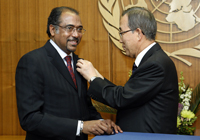
Credit: UN
Thanking the Secretary-General for his exceptional commitment to AIDS, Mr Sidibé asked for his continued leadership in addressing critical challenges and barriers, especially those in achieving universal access and pledged to fulfil the mandate given to him by the Secretary-General.
UNAIDS is committed to solid teamwork with the Cosponsoring agencies and other partners in order to connect the United Nations with people.
UNAIDS Executive Director, Michel Sidibé
Sidibe described UNAIDS as an organization with a soul. "UNAIDS is committed to solid teamwork with the Cosponsoring agencies and other partners in order to connect the United Nations with people," said Mr Sidibé.
New head of UNAIDS Michel Sidibé sworn in by UN S
Multimedia:
Related
 Keeping up the momentum in the global AIDS response
Keeping up the momentum in the global AIDS response

24 April 2019
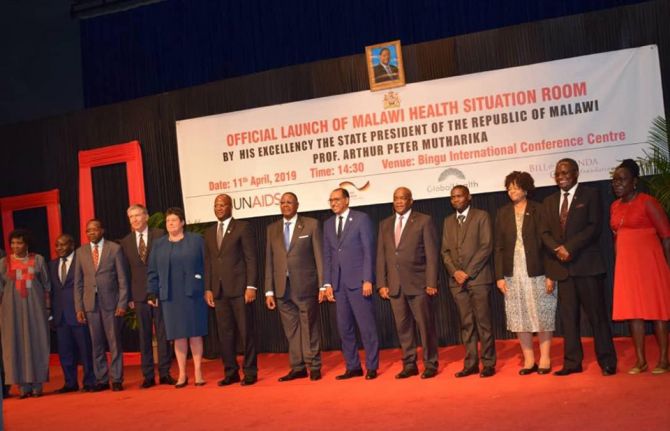 Malawi launches its health situation room
Malawi launches its health situation room

12 April 2019
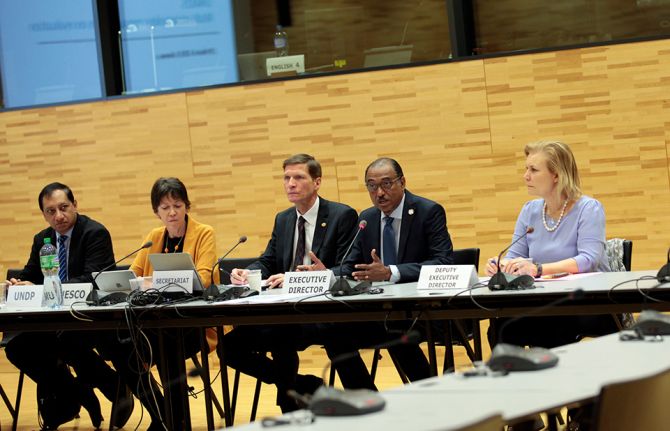 Learning lessons on evaluation
Learning lessons on evaluation

02 April 2019

Feature Story
China to tackle HIV incidence amongst MSM
16 January 2009
16 January 2009 16 January 2009 China announced in 2008 plans for an extensive programme to tackle sharply rising rates of HIV amongst men who have sex with men (MSM)
China announced in 2008 plans for an extensive programme to tackle sharply rising rates of HIV amongst men who have sex with men (MSM)Credit: UNAIDS
China announced in 2008 plans for an extensive programme to tackle sharply rising rates of HIV amongst men who have sex with men (MSM), in the latest sign that the country may be starting to face up to a crisis which long seemed taboo.
Announcing the MSM campaign, the ministry of health said that risky sexual behaviour was the biggest single factor behind the spread of HIV in mainland China, excluding Hong Kong, and that men who had sex with men were now the group most likely to become infected with the virus. In China there are around 700,000 people living with HIV, and 11.1 percent of these are MSM.
“In the past between 1 and 3 percent of MSM on the mainland had HIV; Now it is anywhere from 2.5 to 6.5 percent”, Hao Yang, deputy chief of the ministry’s disease prevention and control bureau, was quoted as saying by the China Daily.
The campaign involved targeted prevention measures for the estimated 5-10 million- Chinese MSM, including stronger promotion of condom use, expanded coverage and quality of HIV prevention activities, increased access to voluntary HIV counselling and testing services, and improved access to treatment for sexually transmitted infections.
As a starting point for its new large-scale campaign to reduce HIV among MSM, China is aiming for some 21,000 MSM to be HIV-tested in order to be able to establish a clearer statistical baseline for the infection rate. This is the largest such study undertaken anywhere in the world and the first of its kind in Asia.
Its prevention effort will involve MSM community based organizations (CBOs) and civil society at all levels. Community-based organisations are carrying out AIDS awareness campaigns, VCT referrals, peer education, safer sex promotion and condom distribution; hot-lines are being run and internet chat rooms and websites used.
UNAIDS, the joint United Nations programme on HIV/AIDS, sees the empowering of MSM and other marginalized groups to protect themselves from HIV as one of the main elements of the global AIDS response.
"The Chinese government has made addressing HIV prevention among MSM a priority and that is something which UNAIDS welcomes," said Bernhard Schwartlander, UNAIDS Country Coordinator in China.
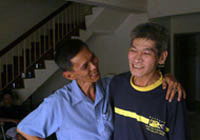
In most Asian countries MSM remains an uncomfortable subject: in many of them, sex between men is illegal and reports of harassment are frequent.
Credit: UNAIDS
But despite progress in China, a number of shortcomings remain, with stigma and discrimination still all too prevalent amongst the general population and even within the MSM community itself.
It is estimated that by late 2007, only 8 percent of MSM had been reached by comprehensive HIV prevention interventions. Furthermore, more than half of China's MSM have more than one sexual partner but only between 10 and 20 percent of them use condoms, according to health ministry estimates.
“It is critical that the government and the many MSM working groups find ways to improve their ability to work together in open and nondiscriminatory partnerships", said Schwartlander.
Largely ignored
Developments in China come amidst indications that governments elsewhere in the Asia-Pacific region are also becoming more willing to acknowledge an epidemic that many had previously largely ignored.
In most Asian countries MSM remains an uncomfortable subject: in many of them, sex between men is illegal and reports of harassment are frequent. As a result, there has been little in the way of specific support for programmes for MSM.
“A lot of attention is being drummed up, but a lot more needs to happen,” said Paul Causey, a Bangkok-based consultant working with the Asia Pacific Coalition on Male Sexual Health (APCOM) and the United Nations on MSM-related issues.
Most Asian men who have sex with other men are not open about their sexual behaviour. Social taboos and discrimination mean that many opt to disguise their sexual preferences; for many others, their sexual practices with other men may only be a small part of social roles they play or their sexual lives. Given that many men who have sex with men also have sex with women, high HIV rates among MSM can also translate into substantial numbers of women at risk of exposure to HIV.
The combination of high numbers of partners with high-risk behaviour such as unprotected anal intercourse has been a key factor behind the accelerating HIV infection rate in many Asian cities.
It said that hardly any Asian country is devoting significant resources to MSM, despite the fact that prevention costs a lot less than treatment. According to the commission, $1 invested in effective prevention can save up to $8 in treatment expenditure for expanding epidemic countries.

Most Asian men who have sex with other men are not open about their sexual behaviour. Social taboos and discrimination mean that many opt to disguise their sexual preferences.
Credit: UNAIDS
Engaging community groups
The tipping point in awakening to the dimension of the MSM crisis was the convening of a special conference in New Delhi in September 2006 entitled “Risks and Responsibilities: Male Sexual Health and HIV in Asia and Pacific”.
The conference was truly tripartite, bringing together governments, donors and 380 members of community groups. As important as the event itself was the run-up, with 16 countries holding UNAIDS-sponsored preparatory meetings. In some cases, including that of China, it was virtually the first time that government officials and representatives from the wider MSM community groups met to assess the situation and discuss solutions.
One of the other lasting achievements of that conference was the decision to launch APCOM, which brings together civil society groups, government sector representatives, donors, technical experts and the United Nations to push for an effective response to the rising HIV incidence amongst MSM.
Its efforts complement those of a United Nations technical working group on MSM and HIV/AIDS in China launched in mid-2006. The group is led by the United Nations Development Programme (UNDP).
“The technical working group is working with government, MSM community groups and donors to improve co-ordination and communication, build government capacities to involve civil society organisations (CSOs) in policy-making and public service delivery, and develop the institutional and professional capacities of CSOs,” said Edmund Settle, HIV manager for UNDP in China.
Right Hand Content
Feature stories:
HIV prevention hampered by homophobia (13 January 2009)
ICASA 2008: Men who have sex with men and HIV in Africa (07 December 2008)
MSM and the global HIV epidemic (31 July 2008)
Strengthening work with MSM in Africa (23 May 2008)
Global initiative to stop the spread of HIV among men who have sex with men (24 July 2007)
Press centre:
UNAIDS and broad coalition working towards the release of nine men who have sex with men in Senegal who have been convicted and imprisoned (15 January 2009)
Criminalization of sexual behavior and transmission of HIV hampering AIDS responses (27 November 2008)
Publications:
Practical guidelines on HIV prevention
Men who have sex with men, HIV prevention and care (pdf, 638 Kb)
Related

Feature Story
US AIDS relief programme exceeds goals for HIV treatment and care
13 January 2009
13 January 2009 13 January 2009
photo credit:
According to the U.S. President’s Emergency Plan for AIDS Relief (PEPFAR) 2009 Annual Report, PEPFAR has exceeded its five-year goals for treatment of two million and care of ten million people.
PEPFAR has supported life-saving HIV treatment for more than 2.1 million men, women and children worldwide. It also supported care for more than 10.1 million people affected by HIV, including more than 4 million orphans and vulnerable children.
On 12 January Secretary of State Condoleezza Rice delivered opening remarks for the release of the U.S. President’s Emergency Plan for AIDS Relief (PEPFAR) 2009 Annual Report to Congress. The report outlines the dramatic successes PEPFAR has had in the AIDS response and highlights the programmes’ achievements through its partnerships with host nations around the world.
In 2003, United States President George W. Bush launched the U.S. President’s Emergency Plan for AIDS Relief (PEPFAR) to tackle the global HIV epidemic. It was the largest commitment by any nation to combat a single disease in history. Through PEPFAR, the U.S. Government has provided $18.8 billion in HIV funding, and the U.S. Congress has authorized up to $48 billion for AIDS, tuberculosis and malaria over the next 5 years.
In the financial year 2008, PEPFAR provided $1.6 billion in support of HIV treatment programmes, in the programme’s focus countries and approximately $712 million to support prevention activities.
U.S. Global AIDS Coordinator, Ambassador Mark Dybul, highlighted the strengthening of health systems as another success of the President’s Emergency Plan. “The data that are available suggest that this intervention in HIV/AIDS is actually building the health care for other areas and having a spillover effect.”
Right Hand Content
Feature stories:
Senate vote renews US government’s global AIDS programme PEPFAR (17 July 2008)
Press centre:
UNAIDS welcomes United States Senate action to renew its global AIDS programme (16 July 2008)
Statement on PEPFAR reauthorization vote by full US House of Representatives (03 April 2008)
UNAIDS welcomes call for $30 billion to the AIDS response (30 May 2007)
External links:

Feature Story
HIV prevention hampered by homophobia
13 January 2009
13 January 2009 13 January 2009
Aside from the individual pain homophobic attitudes inflict, the continuing stigma attached to same-sex relations is complicating hugely the task of slowing the spread of HIV. Credit: L. Tanabe, National STD/AIDS Programme, Brazil
Every two or three days a person is killed in Brazil in violence connected with his or her sexuality, according to Brazil’s oldest gay rights association, Grupo Gay da Bahia (GGB). In Mexico, the reported figure is nearly two a week.
Most of the victims are men who have sex with other men (MSM) - whether they are gays or bisexuals - or transgender people.
But if Brazil and Mexico top the table of violence against men who have sex with men in Latin America, this may be because rights groups there monitor the situation more closely than elsewhere in Latin America. Much violence simply goes unreported elsewhere, gay activist organizations say.
“Brazil and Mexico are the only countries which have a register, which keep track of the murders. That does not mean necessarily that there is more violence there,” says Arturo Díaz Betancourt of the Mexican National Council for the Prevention of Discrimination.
It is notable that when the United Nations Special Rapporteur on Extra-Judicial Killings made an official mission to Guatemala in 2006 his attention was drawn to a series of murders of gay and transgender people, and his subsequent report to the Human Rights Council stated “There has been impunity for murders motivated by hatred towards persons identifying as gay, lesbian, transgender, and transsexual. Credible information suggests that there were at least 35 such murders between 1996 and 2006. Given the lack of official statistics and the likely reticence if not ignorance of victims’ family members, there is reason to believe that the actual numbers are significantly higher.”
Many Latin American countries boast socially advanced legislation when it comes to defending sexual freedom and orientation. With law reform in Nicaragua and Panama over the past 12 months, there are now no states in Latin America which criminalize homosexual relations, for example.
Yet perhaps influenced by a lingering “machismo”, prejudice and discrimination continue to flourish, whatever the laws say. Latin America is widely regarded as having a long way to go to successfully counter homophobia, or “fear or hatred of homosexuals.”
“There is a real contrast between reality and theory. This is the developing region of the world with the highest number of laws against discrimination based on sexual orientation,” says Dr. Ruben Mayorga, UNAIDS Country Coordinator for Argentina, Chile, Paraguay and Uruguay.
Aside from the individual pain homophobic attitudes inflict, the continuing stigma attached to same-sex relations is complicating hugely the task of slowing the spread of HIV in a region where sex between men is a leading mode of HIV transmission, health experts say.
Stigma and homophobia increase the isolation of gays, bisexuals and transgender people making them more reluctant to come forward, be identified and get advice.
“Homophobia represents a threat to public heath in Latin America,” the Pan American Health Organization affirmed in a report. “This form of stigma and discrimination based on sexual orientation does not just affect the mental and physical health of the homosexual community, but contributes to the spread of the HIV epidemic.”
UNAIDS has long campaigned against discrimination whether against those infected by the HIV virus or against a person for his or her sexual orientation.
Main source of new HIV infections

Stigma and homophobia increase the isolation of gays, bisexuals and transgender people making them more reluctant to come forward, be identified and get advice. Credit: L. Tanabe, National STD/AIDS Programme, Brazil
The urgency in Latin America is underlined by official reports on the state of the HIV epidemic in Colombia, Ecuador, Bolivia and Peru where sex between men is acknowledged as being the main source of new HIV infections. HIV prevalence is far higher than in the general population with rates of between 10% and 20% in many Latin America’s main cities.
In its 2008 report to the UN General Assembly (UNGASS) on the state of the HIV epidemic, Brazil stated that MSM are 11 times more likely to be HIV positive than the population as a whole.
In parts of Central America, where there is major political and social resistance to recognising the rights of gays, lesbians and transgender people, HIV incidence rates amongst MSM are particularly high.
And the impacts of these high rates of HIV extend beyond men who have sex with men themselves. In Peru, for example, most women who get infected by the virus get it from men who have had sex with other men, according to a Health Ministry study, thus prevention among MSM is crucial for effective prevention of HIV transmission to women.
Prevention fails to keep pace
Spending on HIV prevention amongst MSM in Latin America is well below what is called for by the extent of the epidemic within that group. On average, less than 10% of the money spent on prevention goes into campaigns aimed specifically at MSM, according to UNAIDS.
In Bolivia, it was estimated in 2005 that fewer than 3% of MSM had access to prevention services, compared with 30% coverage for sex workers.
“All these years, prevention has not been carried out where it needs to be, which is where the epidemic lies,” said Díaz. “They have not worked with gays, with trans (gender people), on the contrary there is rejection and deep discrimination,” he said, referring to the situation across the region.
The explanation lies in a mix of political, cultural and even religious factors, rights activists and health officials say.
“Politically, MSM is not something to make a lot of noise about. In most countries and by many institutions it is not sees as a political gain,” says Mayorga.
Religious groups, whether Roman Catholic or evangelical, which regard sexual relations between people of the same sex as “sinful” have often strenuously opposed attempts to pay special attention to MSM.
“Governments are highly influenced by religious sectors that mobilise against policies that benefit gays, bisexuals or trans,” says Orlando Montoya, who works in Ecuador with ASICAL, an organization promoting the health of gays, other MSM and lesbians in Latin America.
However, it is hard to generalize. Some churches have been at the forefront of outreach to men who have sex with men and many local religious organizations in Latin America have responded to HIV with tolerance and compassion, including among the most marginalized populations.
Internationally overlooked
But it is not just a question of country governments not paying due attention to MSM. Latin America has not attracted the level of international investment in stemming HIV epidemics that has been seen in other parts of the world -- in Asia and in Africa.
To some extent, the region has been victim of the three “nots” when it comes to receiving international financing for its HIV efforts, Mayorga says. It is ‘not’ very populated, it is ‘not’ very poor and it is ‘not’ a very big epidemic.
Rules covering assistance by the Global Fund to Fight AIDS, Tuberculosis and Malaria, the principal international financing arm against the diseases, have worked against the region because they have tended to exclude middle and upper middle income countries, such as Argentina and Chile.
However, the Fund has recently agreed to study proposals for assistance for programmes in better-off countries facing concentrated epidemics with HIV prevalence rates of over 5 % in groups at risk, such as MSM, drug users, transgendered people or sex workers.
Renewing the focus
In the face of the persistent evidence of neglect, there are some positive signs in the region that MSM epidemics will be responded to with more adequate measures and policies.
In the past four or five years, Brazil and Mexico, and to a more limited extent Argentina and Colombia, have run campaigns against homophobia. These countries, together with others, have also sought to incorporate special MSM action into programmes to contain the spread of HIV.
The official programme “Brazil without Homophobia” was launched in 2004, with the aim of improving the service given to gays, other MSM and transgender people within state health institutions. It will also scale up coverage and the response to the HIV epidemic within these groups.
Peru has launched a national plan giving priority to prevention programmes for what are defined as “most-affected” groups – which include MSM, sex workers and prisoners. With financing from the Global Fund, the plan aims to extend prevention coverage to at least 25% of MSM and 50 percent of sex workers.
Similarly, Bolivia has drawn up a national plan to cut HIV infection rates by half by 2015, which includes campaigns to strengthen rights of MSM and transgender people and to combat discrimination and stigma.
Despite these promising developments, Latin America is still a long way from getting its MSM epidemics under control and homophobia and stigma remain significant stumbling blocks to achieving it.
Right Hand Content
Feature stories:
ICASA 2008: Men who have sex with men and HIV in Africa (07 December 2008)
MSM and the global HIV epidemic (31 July 2008)
Strengthening work with MSM in Africa (23 May 2008)
Global initiative to stop the spread of HIV among men who have sex with men (24 July 2007)
Press centre:
Criminalization of sexual behavior and transmission of HIV hampering AIDS responses (27 November 2008)
Publications:
Practical guidelines on HIV prevention
Men who have sex with men, HIV prevention and care (pdf, 638 Kb)
Related

Feature Story
HIV: Know your epidemic, understand the politics
07 January 2009
07 January 2009 07 January 2009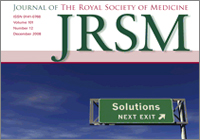
Know your epidemic, understand the politics
For every two people accessing HIV treatment, another five are newly infected with the virus. Given the gap, there is broad agreement among scientific, government and civil society communities on the need to intensify HIV prevention efforts.
UNAIDS promotes HIV prevention responses that are tailored to local contexts and are evidence-informed through epidemiological analysis, behavioural data and an understanding of social and gender norms.
According to an editorial published last year in the Journal of the Royal Society of Medicine, “knowing your epidemic” is in itself not enough to act upon it. The December 2008 article, co-authored by Michel Sidibé, UNAIDS, Kent Buse, UNAIDS and Clare Dickinson, HLSP Institute, argued that the failure to appreciate the political dimensions of HIV can frustrate efforts to promote and implement evidence-informed policy.
The authors advocate that analysis identifying the political obstacles and opportunities to evidence-informed policy should constitute a core feature of every national HIV response.
An analysis of 28 peer-reviewed articles reporting on empirical studies of policy change in low and middle income countries was published by the HLSP Institute in October 2008. The findings aimed to help advocates and policy-makers take more strategic decisions about future policies and their implementation.
Right Hand Content
Feature stories:
The Lancet: Series on HIV prevention launched (06 August 2008)
External links:
The Royal Society of Medicine Press Journals
HLSP Institute Technical Approach Papers: Politics of HIV policies
Publications:
Understanding the politics of national HIV policies: the roles of institutions, interests and ideas - Clare Dickinson, Kent Buse October 2008
HIV: know your epidemic, act on its politics - Kent Buse, Clare Dickinson, and Michel Sidibé: J R Soc Med 101(12): 572-573; doi:10.1258/jrsm.2008.08k036

Feature Story
Migrants and HIV: “Far Away From Home” club
05 January 2009
05 January 2009 05 January 2009
Viet Nam’s rapid economic development and growth over the last decade has resulted in increased levels of mobility both within the country and across its borders.
Viet Nam’s rapid economic development and growth over the last decade has resulted in increased levels of mobility both within the country and across its borders. Large infrastructure and development projects coupled with industrial growth have encouraged young people and workers from all over the country to move to major cities and provinces.
However, in areas of rapid economic development and increasing internal migration, factors such as separation from family and communities and harsh working conditions contribute to an increased vulnerability of migrants and mobile populations to HIV and other sexually transmitted infections as they engage in unsafe behaviours such as unprotected sex and injecting drug use.
Additionally, as HIV prevention and health care services are not specifically targeted towards migrants and mobile populations these groups tend to have poorer access to such services. This is especially true for migrants and mobile people who are often not registered as residents in the area where they work.
The migrant population includes female sex workers, migrant workers on construction sites, industrial and exporting zones and workers at river ports and bus stations.
Since its designation as an Industrial and Processing Zone in 2002, Can Tho province, in the south western region of the country, has stood out as a magnet destination for migrant workers as it is the largest city in the Mekong River Delta. The number of HIV cases in Can Tho has also increased at least ten fold, from 73 in 1997 to 733 in 2006.
In 2004, the Canada South East Asia Regional HIV/AIDS Programme initiated a project with the Can Tho Department of Labour, Invalids and Social Affairs and the Can Tho Trade Union to undertake HIV prevention activities with migrants working as casual labourers, truck drivers and sex workers. The project established the Far Away From Home Club, which aims to provide a supportive and empowering environment for sex workers and other migrant workers in Can Tho City.
It is estimated that there are 1100–1600 female sex workers in Can Tho province, of whom 400–500 are street-based sex workers; the same authorities place the number of people who inject drugs between 2200–2500.
Peer education
The Club empowers members of mobile populations such as sex workers and internal migrants by providing life-skills training focusing on HIV and other sexually transmitted infections, on AIDS, public speaking skills, gender and sexuality, stigma and discrimination.
A core team of 10 peer educators (five sex workers and five migrant workers) have supported over 60 Far Away From Home Club members; they have received and shared information and skills that reduce their likelihood of exposure to HIV. These members return to their social networks and informally share their knowledge with their peers.
One of the main achievements of the project has been to ensure the confidentiality of all of those who seek help and support from the group. The assurance of complete anonymity and confidentiality has encouraged more sex workers and migrant workers to access health services through the referral of the Club members and peer educators. In particular, referrals were made to a variety of clinics that provide confidential and accessible services for mobile populations, including treatment of sexually transmitted infections voluntary counselling and testing, and general health check-ups.
The club touches the lives of hundreds of migrants and mobile people every month through their engagement of the private sector in workplace interventions or its outreach activities at hotspots for direct and indirect sex workers.
Involving migrants and mobile populations and empowering them to advocate for access to HIV services for their peers has been crucial to the success of the programme. Furthermore, its ethical soundness, relevance and effectiveness have made the project a successful component of the HIV prevention strategies and a reference work targeting migrants and mobile populations.
Right Hand Content2
Press centre:
Statement of the UNAIDS Secretariat to the Sixty-First World Health Assembly - Health of Migrants (22 May 2008)
Feature stories:
New UNAIDS policy on HIV and international labour migration (16 July 2008)
Publications:

Feature Story
UNAIDS in 2008: A year of progress, challenge, debate, and change
26 December 2008
26 December 2008 26 December 2008
2008 has been a year of progress, challenge, debate, and change. In this year end review, UNAIDS provides a snapshot of key issues, events, and initiatives that shaped the global AIDS response in the past 12 months.
| Progress |
| Investments in AIDS producing results |
|
|
|
Several milestones were reached in 2008: the goal of having at least three million people on antiretroviral treatment was achieved; at the end of 2008 around four million people were on treatment. There were fewer new HIV infections in 2008 than in 2005, and the number of people dying due to AIDS has decreased. |
|
|
|
| Increased Leadership for the Global AIDS response | |
|
|
Leadership commitment to HIV has been at high levels throughout 2008. At the High Level Meetings on AIDS and the Millennium Development Goals, countries reaffirmed their commitments to achieve global targets on AIDS. A new initiative by the former President of Botswana, Mr Festus Mogae, brought together African leaders to unite on HIV prevention efforts. Two independent commissions on AIDS, one in Africa and one in Asia, reviewed the state of the AIDS epidemic in the two continents and called upon leaders to accelerate HIV prevention and treatment efforts. Nearly US $10 billion was available for the AIDS response in low- and middle-income countries. Domestic spending on AIDS increased between 25% and 54%, and sub-Saharan countries spent six times more from their own resources. The United States of America committed a further US $48 billion from 2009 for five years for spending AIDS, Tuberculosis and Malaria.
|
|
|
|
| Challenges |
| HIV prevention and treatment efforts lagging behind | |

|
Significant challenges in the AIDS response remain: for every two people put on treatment, five others are newly infected. The total number of people living with HIV has increased to 33 million. Nearly 6 million people are in need of treatment today. Access to pediatric treatment for children is lagging behind, and men who have sex with men, people who inject drugs and sex workers are often ignored by HIV prevention and treatment programmes. |
|
|
|
| Global crises impact AIDS response | |
|
|
Health systems are being stretched – and so are other sectors, for example education and labour. Rising food prices, along with shortages in food production, have placed additional burden on the ability of families to sustain their lives. Furthermore, the global financial crisis has lead to uncertainty about the potential impact on the AIDS response. |
|
|
|
| Human rights of people living with HIV and marginalized populations often violated | |
|
|
Many countries are revising or adopting new laws, many to protect people living with HIV from discrimination. But in many countries, there is a worrying trend in criminalizing transmission of HIV as well as of sexual behaviour. |
|
|
|
| Debates |
| Is AIDS over? | |
|
The UNAIDS 2008 Report on the global AIDS epidemic clearly showed that AIDS is not over in any part of the world, even though the number of new HIV infections has fallen in several countries. The report cautioned that AIDS continues to be a leading cause of death in Africa. It also underlined that HIV incidence is increasing in countries with older epidemics such as the United States of America, Australia, Germany, and England. World leaders at various international forums, starting from the UN High Level Meeting on AIDS and the Mexico AIDS conference to ICASA in Dakar have resoundingly refuted the notion that ‘AIDS is over’. |
|
|
|
| Is AIDS weakening health systems? | |
|
|
Weak health systems have impeded progress in accelerating access to HIV treatment services in many countries. At the same time, AIDS has also caused a strain on the already weak health systems in many countries. Speaking at the International AIDS Conference in Mexico, the Director General of WHO Dr Margaret Chan said, “We should not blame disease-specific programmes for weakening the health system. The truth is that for decades, governments have underinvested in health infrastructure”. Dr Chan added that “further sustainable progress depends absolutely on improved service capacity. At this stage, we have an historical opportunity to align the agenda for responding to AIDS with the agenda for strengthening health systems.” UNAIDS Executive Director Dr Peter Piot, Executive Director of UNAIDS, in an interview said, “There’s absolutely no evidence that AIDS undermines health services. If anything, it certainly strengthened certain services. Determined governments will make sure that disease specific funding is used to strengthen local capacity.” |
|
|
|
| Is there a single magic bullet for HIV prevention? | |
 |
HIV prevention strategies and programmes have been at the centre of many debates. Various experts have approached it from different angles: the role of multiple sexual partners and concurrent relationships, HIV treatment as prevention, male circumcision, the role of condoms, and delaying sexual debut have been subjects of discussion. UNAIDS has argued that the word “only” doesn’t work for AIDS—whether it is for treatment only, HIV prevention only, condoms only, abstinence only or male circumcision only. In reality all are needed—a truly comprehensive approach. For UNAIDS, the three pillars of a comprehensive and effective AIDS response, as we move towards universal access, are HIV prevention, treatment, and care and support. UNAIDS advocates that countries implement HIV prevention programmes that will be truly effective in reducing new HIV infections. This requires a strategic combination of interventions that address populations that are at risk or vulnerable for HIV transmission and that utilize behavioral and social change methods that are appropriate and informed by the latest evidence. |
|
|
|
| Change at UNAIDS |
| Dr Peter Piot’s term as UNAIDS Executive Director comes to an end in 2008. | |
|
|
At the end of 2008, Dr Peter Piot, the founding Executive Director of UNAIDS, will leave his post after leading the organization since its inception. In 2009, he will join Imperial College London as the first director of its new Institute for Global Health. |
|
|
|
| Mr Michel Sidibé appointed new UNAIDS Executive Director. | |
 |
Michel Sidibe, the current Deputy Executive Director of Programmes for UNAIDS, was appointed the new Executive Director of UNAIDS on World AIDS Day. He assumes his new position in January 2009. |
|
|
|

Feature Story
Supporting young learners living with HIV in Namibia and Tanzania
23 December 2008
23 December 2008 23 December 2008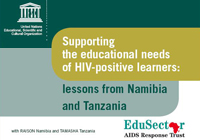
"Supporting the educational needs of HIV-positive learners: Lessons from Namibia and Tanzania”.
Credit: UNESCO
According to a new UNESCO report the learning needs of HIV-positive children in Namibia and Tanzania are currently not being met by their education sectors whose AIDS responses are described as wanting in many respects.
The United Nations Educational, Scientific and Cultural Organization (UNESCO) says that schools and the education sector have an opportunity and responsibility to support HIV-positive children in their leaning and social development. To enhance the capacity of the education sector, they commissioned this first report specifically on the educational needs of HIV-positive learners.
“Supporting the educational needs of HIV-positive learners: Lessons from Namibia and Tanzania” identifies the challenges facing educational institutions who want to respond to the needs of children and young people living with HIV and makes recommendations and guidelines on how best to support them.
The pervasive theme of stigma and discrimination is one of the most striking findings in the study. Every HIV-positive child interviewed in both Namibia and Tanzania described personal and ongoing experience of the negative consequences of disclosing their HIV status. Each felt that there was greater safety in keeping silent. Stigma was described as “more killing” than the disease itself.
The studies found that the information on HIV shared in schools was often “depersonalized and remote from the needs of the individuals infected and affected by the disease.” Associated with this sense of denial and silence surrounding HIV is a lack of effective communication about sex or reproductive health. In many schools this subject was found to be treated “flippantly.”
The review found that the school environment has the potential to offer important social and developmental support to a child. Families of HIV-positive children can themselves be adversely affected by HIV and this means teachers’ and peer support can be a valuable supplement to a child. As many HIV-positive children live in residential homes rather than family setting, the school becomes an important adjunct to institutional care.
The report argues that gaps in data and a lack of research are masking the extent of the failures to support HIV-positive learners. Meanwhile evidence of reduced school fees and expanded feeding schemes for children orphaned or made vulnerable by HIV as well as children living with HIV, suggests that “things are getting better.”
Improving the equitable delivery of accessible, quality education for all children is recommended by the UNESCO report is as important a focus as specific interventions for children living with HIV.
Supporting young learners living with HIV in Nami
Cosponsors:
Publications:
Supporting the educational needs of HIV-positive learners: lessons from Namibia and Tanzania (pdf, 1.86 Mb - Currently available in English, the report is forthcoming in French and Portuguese. Limited copies of the report can be obtained free-of-charge by emailing to aids@unesco.org and specifying the number of copies and preferred language version)
Related

Feature Story
More prevention focus needed for the Caribbean to sharpen its response to HIV
22 December 2008
22 December 2008 22 December 2008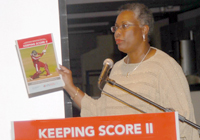
Dr Karen Sealey, Director of the UNAIDS Caribbean Regional Support Team addressing the recent launch of Keeping Score II in Port of Spain.
Credit: UNAIDS
Those at highest risk of being infected by HIV in the Caribbean are not generally included at the heart of HIV prevention strategies. This is one of the conclusions of Keeping Score II, a publication launched by UNAIDS Caribbean Regional Support Team recently in Trinidad and Tobago.
Keeping Score II is a consolidated analysis of Caribbean country progress reports presented by governments to the 2008 United Nations General Assembly High-level meeting on AIDS.
However, nearly 80% of the country updates did not report on prevention programme coverage for men who have sex with men, sex workers and those who use non-injecting drugs. These gaps, it is argued, indicate that in many national decision-makers and implementers of country responses don’t have a clear understanding of the role played by these most-at-risk populations in their epidemic and the need for prevention programmes to specifically reach them.
Addressing the recent launch of the report in Port of Spain Dr Karen Sealey, Director of the UNAIDS Caribbean Regional Support Team, stated that more effort was required to ensure that HIV prevention programmes reached those at most risk.
The need for greater prevention success was echoed by Dr Amery Browne, Trinidad and Tobago’s minister of Social Development who addressed the launch. Noting that last year 20,000 people in the region became newly infected with HIV, Dr Browne said, “this shocking statistic should give us more than pause for thought. It should encourage us to look at innovative ways to reach key audiences with prevention messages. We need to be bold."
Along with an examination of challenges, Keeping Score II also highlights achievements in the AIDS response in the Caribbean. There has been notable success in terms of HIV treatment, which has been dramatically expanded. By the end of 2007, 30,000 people were receiving antiretroviral therapy, an increase of 50% in twelve months. However, treatment coverage remains below 45% in the region.
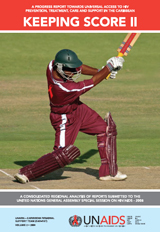
Keeping Score II is a consolidated analysis of Caribbean country progress reports presented by governments to the 2008 United Nations General Assembly High-level meeting on AIDS.
In the areas of prevention of mother-to-child transmission of HIV and blood safety, progress has been made in a range of countries. In addition, there has been an increase in high-level political commitment, more resources have been allocated to national responses and the multisectoral approach is widening and deepening.
Ms Angela Lee Loy, chair of the National AIDS Coordinating Committee (NACC) in Trinidad and Tobago, hoped that Keeping Score II would be used extensively to help the Caribbean shape and sharpen its response to HIV. "I believe it is a critical initiative that will enable the NACC to improve our strategic planning," she said.
The Caribbean is the second most-affected region in the world after sub-Saharan Africa with an adult HIV prevalence rate of 1.1% and AIDS remains one of the leading causes of death among people aged 25 to 44 years in the Caribbean. The epidemic has stabilized in several counties—though this has tended to occur at a high level. At the end of 2007 an estimated 230,000 people were living with HIV in region.
More prevention focus needed for the Caribbean to
Feature stories:
Much progress to report: UNGASS 2008 (12 March 2008)
Publications:
Keeping Score II (pdf, 2.82 Mb)
Related

Feature Story
Love in a Time of HIV
19 December 2008
19 December 2008 19 December 2008
"It is possible to love someone with HIV. It is not different from loving anybody else,” says Christina Rodriguez in one of the five episodes of the new documentary series "Love in a time of HIV" . Credit: aids2031
“It is possible to love someone with HIV. It is not different from loving anybody else,” says Christina Rodriguez in one of the five episodes of a new documentary series on the sexual and reproductive lives of young people living with HIV titled "Love in a Time of HIV".
Sixteen year old Christina was diagnosed HIV positive when she was three, at the same time that her parents found out about their positive status. Now, she talks openly about how she copes with her treatment and how she and her mother are dealing with being HIV positive. “Maybe it will make dating harder but I don’t have to tell them anything until I think we are serious.”
Cristina tells her story in one of five episodes which explore how young people living with HIV are navigating the transition to adulthood, their sexual and reproductive lives, careers and families and their expectations and hopes for the future. Each episode profiles several young people living with HIV in a different city: New York, Mumbai, London, St. Petersburg and Cape Town.
Through intimate stories Love in a Time of HIV aims to help counter the growing complacency surrounding AIDS by exposing how young people are affected by the epidemic as well as educating viewers on the urgent needs of young people both HIV positive and negative to access sexual and reproductive health information and services.
“I was just given a little piece of paper with a plus on it. What was it? What does it mean? I didn’t understand what the plus meant at the time. But later, at the [rehab] clinic, they simply refused my admission by saying that I was HIV positive” stated Masha who used to inject drugs and is living with HIV.
Masha and her friend are both married to HIV negative young men. As their story unfolds, the viewer is presented with the difficult dilemma that these discordant couples face. The men, both 25, are so keen to be fathers they are both having unprotected sex with their HIV positive wives to try to conceive a child disregarding their risk of getting infected.
Today’s young people grew up alongside the emergence of the AIDS pandemic, and their actions are key to determining the future of AIDS. Young people are also disproportionately affected by AIDS – over 40 percent of new HIV infections globally occur in young people under the age of 25. There are currently 10 million young people living with HIV, many of whom do not have access to the treatment, care and support needed to live healthy lives.
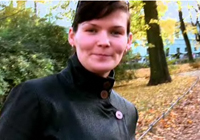
Masha and her friend are both married to HIV negative young men. As their story unfolds, the viewer is presented with the difficult dilemma that these discordant couples face. Credit: aids2031
Despite the glaring statistics that today’s youth around the world are often most at risk of HIV infection, and the host of issues young people face daily – from skyrocketing unemployment rates to sexual violence and rapidly unfolding conflict situations – very little is known about the views and behaviors of young people, especially when it comes to their sexual and reproductive health. Young people are often not consulted in national-level health policy and programmes, and there is a growing gap between what academics and policy-makers consider to be the “reality” of young people’s lives, and the actual experiences of young people growing up in a quickly globalized economy.
Young people’s perspectives and insights into the issues they and their countries face on a daily basis are crucial to develop an effective AIDS response. Their views and opinions should be mainstreamed within the AIDS response to ensure young people are adequately being addressed by programs and policies.
The Love in a Time of HIV series is currently on air on BBC World, running since November 2008. It is also being discussed and disseminated online. Find out more on BBC World web site and the series can be viewed from the aids2031 web site.
About aids2031
aids2031 is a two-year project developed in 2007 by a consortium of partners—including economists, epidemiologists, biomedical, social and political scientists—to look at what has been learned about the global AIDS response, and to deliver recommendations on how to shift it towards one that is long term and sustainable. This project is not about what should be done in 2031, but what can be done differently, now, to change the face of the pandemic by 2031, 50 years after AIDS was first reported.
In late 2009, aids2031 will issue its recommendations in its final report, An Agenda for the Future. To provide input into this report, aids2031 has convened nine global working groups, each charged with questioning conventional wisdom, stimulating new research and sparking public debate around the current and future AIDS response. To that end, the various working groups have engaged nearly 500 leaders, activists and experts within, and outside of, the AIDS community in discussions with think tanks, public dialogues and a young leaders summit.
Love in a Time of HIV
Related
 “Who will protect our young people?”
“Who will protect our young people?”

02 June 2025

